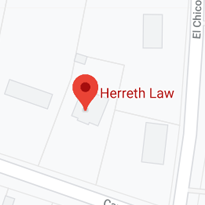As far back as the 1960s, law enforcement agencies in Texas used random checkpoints to circumvent the reasonable suspicion rule. Sometimes, these DWI checkpoints consisted of little more than groups of officers who pulled over motorists if they “didn’t look right.” For that reason, these checkpoints were usually illegal.
But then along came 1990’s Michigan State Police v. Sitz. This Supreme Court case formalized the requirements for these roadblocks. If they are deficient in any area, no matter how technical the deficiency seems, the entire checkpoint may be invalid.
Supervisor-Level Planning
For the most part, everything about the checkpoint must come from above. Officers at the checkpoint can have no discretion when it comes to the roadblock’s operation. That includes things like:
· Hours of operation,
· Checkpoint location, and
· Manner of detaining motorists.
That last point is about the only exception to the supervisor-only rule. Officer have some discretion here. For example, officers may start by detaining every other vehicle. But if traffic backs up, they may switch to every third or fourth vehicle.
In Texas, most checkpoints fail under this part of the standard. In 1994’s Holt v. State, the Texas Court of Criminal Appeals invalidated an Arlington checkpoint. According to court documents, “the sergeant in the Traffic Division, who was the supervisor of the checkpoint,” selected the location. Furthermore, the Justices noted, no politically accountable, statewide organization in Texas had approved DWI roadblocks. Without this approval, “such roadblocks are unreasonable and unconstitutional under the Fourth Amendment of the U.S. Constitution.”
Uniform Standard
Generally, police officers must have reasonable suspicion to detain motorists. “Reasonable suspicion” usually means specific, articulable facts which point to criminal activity. Typically, these facts involve a traffic violation. That could be a moving violation, like speeding, or a non-moving violation, like an expired registration sticker.
Officers do not need reasonable suspicion at DWI checkpoints. However, they may only detain motorists according to a pre-arranged schedule, as outlined above.
Minimal Detention
There is no set rule here. But generally, motorists must not be forced to wait more than three or four minutes at a checkpoint. That includes the time they spend in line getting to the checkpoint as well as the detention period.
Minimal Disruption
If left to their own devices, most officers would like to place checkpoints at busy intersections or freeway off-ramps where there is lots of traffic. But spots like these are highly unsafe. Either traffic moves too fast or there is so much congestion that there is a high potential for collisions. The opposite is true as well. Officers cannot place checkpoints on quiet side streets because that would be too disruptive for residents. So, police supervisors must find happy mediums when they set up roadblocks.
Sufficient Marking
The checkpoint must be clearly marked in terms of its purpose and the sponsoring agency. Furthermore, initial warning signs must be far away from the checkpoints. Motorists must have the option of turning around and avoiding the roadblock before they get stuck in traffic.
Respect for Individual Rights
Drivers have rights at checkpoints. Officers can demand to see certain documents, like a drivers’ license and proof of insurance. But drivers do not need to do anything else. They do not need to answer questions or even roll down their windows.
DWI checkpoints must meet certain requirements. For a free consultation with an experienced criminal defense attorney in Weatherford, contact Herreth Law. Home and jail visits are available.

